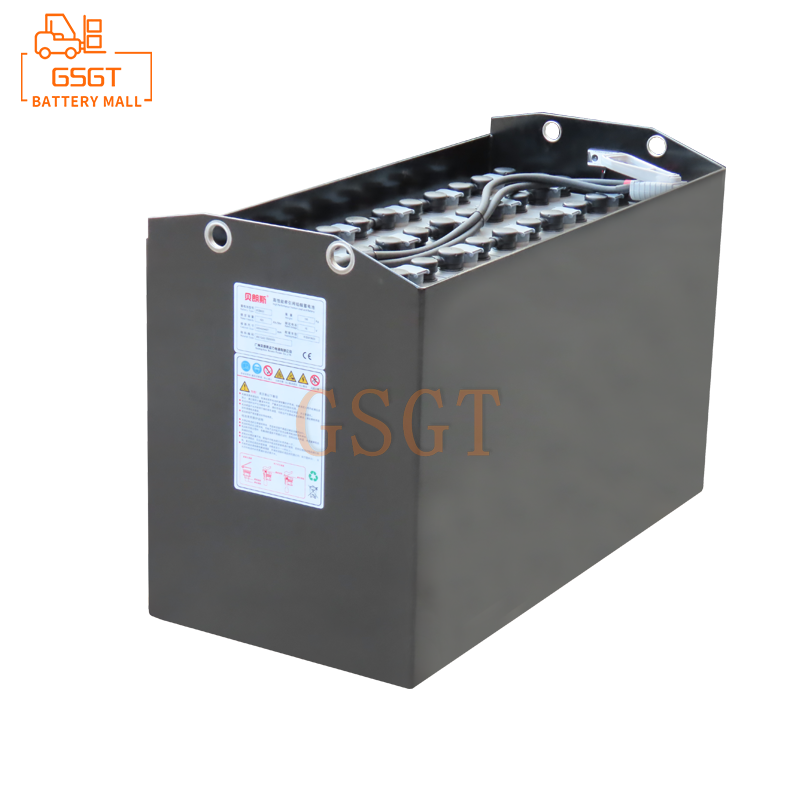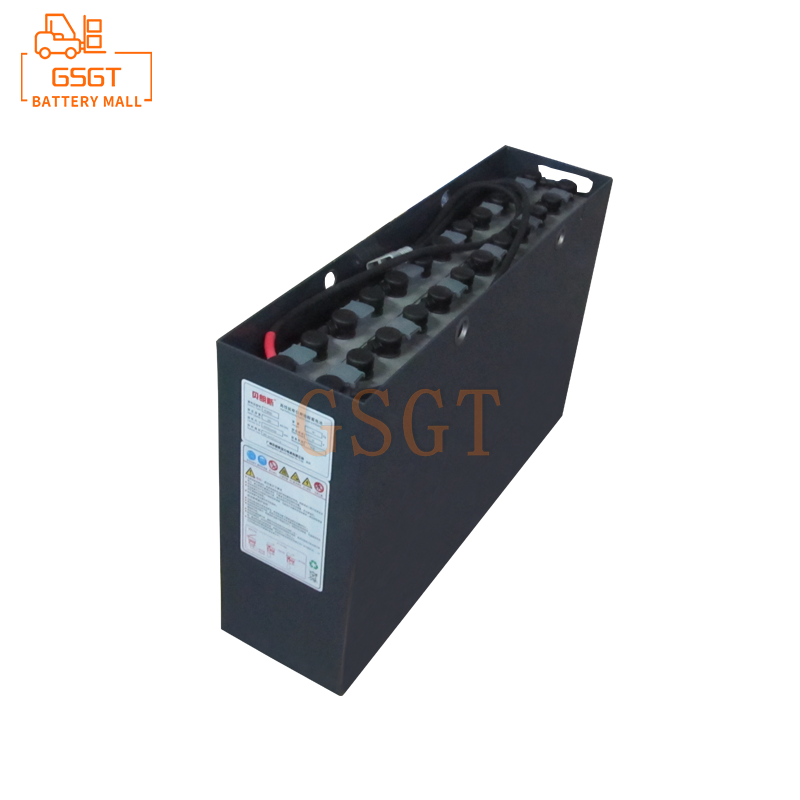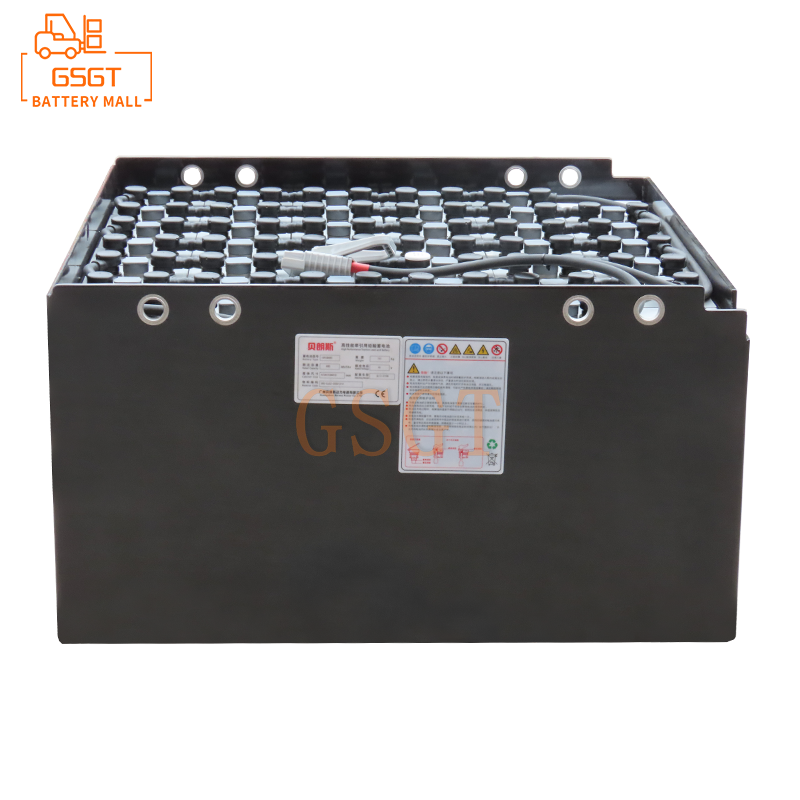Time:2025-05-24 16:37:27
Browse:610
In modern logistics and warehousing operations, forklifts play a crucial role. As the "heart" of forklifts, the performance of lead-acid batteries directly determines the working efficiency and service life of forklifts. Correct and comprehensive daily maintenance is the key to ensuring the stable operation of lead-acid batteries and extending their service life. This article will elaborate in detail on the full-process daily maintenance methods of forklift lead-acid batteries from multiple aspects such as water replenishment, cleaning, charge and discharge management, and equalization charging, providing practical and valuable references for forklift users.
1. Hydration: A fundamental task for maintaining battery health
During the charging and discharging process of lead-acid batteries, the moisture in the electrolyte gradually decreases due to electrolysis and evaporation, leading to an increase in the density of the electrolyte and intensified sulfation of the plates, thereby affecting the battery's performance. Therefore, regular water replenishment is an important part of the daily maintenance of lead-acid batteries.
Judging the timing of water replenishment: Generally speaking, after the battery has been used for a period of time, check the electrolyte level by observing the liquid level indicator or opening the battery cover. Under normal circumstances, the electrolyte should be 10 to 15 millimeters above the top of the plate. When the liquid level is lower than this standard, water replenishment operation is required. In addition, frequent high-current discharges and use in high-temperature environments will also accelerate water evaporation. Therefore, the water replenishment inspection cycle needs to be shortened.
Selection of water replenishment solution: Only high-purity distilled water or dedicated lead-acid battery replenishment solution must be used. Tap water or mineral water is strictly prohibited. Because tap water contains various minerals and impurities, it will undergo chemical reactions with the sulfuric acid inside the battery, reducing the purity of the electrolyte, accelerating the corrosion of the plates, and seriously affecting the performance and lifespan of the battery.
Water replenishment operation method: Before replenishing water to the battery, the surface of the battery should be cleaned thoroughly to prevent dust and impurities from falling into the battery interior. Open the upper cover of the battery and slowly inject distilled water or replenishment solution into each cell. Be careful not to exceed the upper limit of the liquid level. During the process of hydrating, it is necessary to avoid liquid splashing. If it accidentally splashes onto the skin or eyes, rinse immediately with plenty of water and seek medical attention promptly. After the water replenishment is completed, close the battery cover tightly to ensure a good seal to prevent the water from evaporating too quickly again and external impurities from entering.
2. Cleaning: An important measure to ensure the normal operation of the battery
Dust, electrolyte residue and other impurities on the battery surface not only affect the appearance of the battery, but may also lead to an increase in battery self-discharge and a reduction in battery performance. Therefore, it is very necessary to clean the battery regularly.
External cleaning: Use a clean damp cloth to wipe the battery surface to remove dust, oil stains and other dirt. For stubborn stains, an appropriate amount of baking soda water (sodium bicarbonate solution) can be used for cleaning. As baking soda water is alkaline, it can neutralize the acidic electrolyte remaining on the battery surface, playing a role in cleaning and protection. During the cleaning process, be sure to prevent water from entering the battery interior. After cleaning, dry the battery surface with a dry cloth.
Cleaning of terminals and connecting wires: During the use of battery terminals and connecting wires, oxides are prone to form, resulting in poor contact, increased resistance, and affecting the charging and discharging effects. You can gently sand the contact surface between the terminal post and the connecting wire with sandpaper to remove the oxide, and then apply a thin layer of Vaseline or a special battery terminal post protector to prevent re-oxidation and ensure a tight connection and good conductivity.
3. Charging and Discharging Management: Scientific Use Extends Battery life
Reasonable charging and discharging management can effectively extend the service life of lead-acid batteries and prevent battery damage caused by excessive charging and discharging.
Charging management
Charging timing: When the battery power remains at around 20% to 30%, it should be charged promptly. Avoid over-discharging, as it will accelerate the sulfation of the plates and shorten the battery life. At the same time, do not frequently charge the battery when its power is too high. This will increase the gas evolution and heat generation of the battery, accelerating its aging.
Charging environment: When charging, choose a well-ventilated, dry and cool environment. Avoid charging in high-temperature, humid or flammable and explosive gas places. High-temperature environments will increase the internal temperature of the battery, accelerating water loss and plate aging of the battery. A humid environment is prone to causing battery leakage. Flammable and explosive gases pose safety hazards.
Charger selection: Use a dedicated charger that matches the battery specifications. Different models and capacities of batteries have different charging parameters (such as charging voltage, current, etc.). Using an unmatched charger may result in insufficient or overcharging, which can damage the battery. During the charging process, pay attention to observing the status of the charger's indicator light and the battery's heating condition. If any abnormality is found, stop charging immediately and check the cause.
Discharge management: During the operation of forklifts, it is necessary to avoid prolonged high-current discharge. High current discharge will cause the active substances on the surface of the battery plates to fall off rapidly, reducing the battery capacity. At the same time, try to avoid frequent sudden acceleration and braking operations, as these operations can instantly increase the current and cause damage to the battery. In addition, when the forklift is overloaded, forced operation should be avoided to prevent increasing the burden on the battery.
4. Equalization charging: A key step to ensure the consistency of the battery pack
Forklift lead-acid batteries are usually composed of multiple single-cell batteries connected in series to form a battery pack. During long-term use, due to the performance differences of each single-cell battery, the voltage and capacity of each cell in the battery pack will be unbalanced. Equalization charging can effectively solve this problem and improve the overall performance and lifespan of the battery pack.
Equalization charging frequency: Generally, a equalization charge should be carried out once every 20 to 30 regular charges. If the battery pack shows significant voltage differences or a marked decrease in the capacity of some individual cells, equalization charging should be carried out promptly.
Equalization charging operation method: Before performing equalization charging, fully charge the battery according to the normal charging process first. Then, switch the charger to the equalization charging mode (some chargers have an automatic equalization charging function and will automatically enter the equalization charging stage in the later stage of charging). During equalization charging, the charging voltage is slightly higher than that of ordinary charging, the charging current is smaller, and the charging time is longer, usually taking 8 to 12 hours. During the equalization charging process, it is necessary to closely monitor the battery's voltage, temperature and the condition of the electrolyte. If any abnormal situation is found, such as the battery temperature being too high (exceeding 50℃) or the electrolyte boiling vigorously, charging should be stopped immediately. After the battery cools down, the cause should be checked and corresponding measures taken.
Judgment of equalization charging effect: After the equalization charging is completed, measure the voltage of each cell in the battery pack. The difference should be within 0.05V, indicating that the equalization charging effect is good. If the voltage difference remains large, it may be necessary to perform equalization charging again or check whether the battery is faulty.
5. Other Daily Maintenance Precautions
Regular inspection: In addition to the above-mentioned maintenance work, a comprehensive inspection of the battery should also be carried out regularly, including checking whether the battery casing is damaged or deformed, checking whether the connection wires are loose or aged, and checking the charging and discharging performance of the battery, etc. Deal with problems in a timely manner to prevent minor issues from developing into major malfunctions.
Storage management: If the forklift is not used for a long time, the batteries need to be properly stored. Before storage, fully charge the battery first, and then perform a supplementary charge every two weeks to prevent the battery from self-discharging and causing a loss of power. The storage environment should be kept dry and well-ventilated, with a temperature between 5℃ and 25℃ being ideal.
Operator training: Forklift operators should receive professional battery maintenance training, understanding the working principle, maintenance methods and safety precautions of lead-acid batteries. Correct operation and maintenance habits can effectively extend battery life, improve work efficiency, and ensure work safety at the same time.
In conclusion, the daily maintenance of lead-acid batteries in forklifts is a systematic and meticulous task, covering multiple aspects such as water replenishment, cleaning, charging and discharging management, and equalization charging. Only by strictly following the norms for maintenance can lead-acid batteries always maintain good performance, providing a reliable guarantee for the efficient operation of forklifts, reducing the operating costs of enterprises and improving economic benefits.

$2450

$1060

$5710

$5710

MESSAGE
Professional And Efficient
Security
Affordable Price
Professional Services